
Anatomy of Flexor Digitorum Superficialis —
The flexor digitorum superficialis is an extrinsic muscle that allows the four medial fingers of the hand to flex. These fingers include the index, middle, ring, and pinkie fingers. The term.

Musculus flexor digitorum superficialis sportbachelor
Flexor Digitorum Superficialis. Origin. Humeroulnar head: medial epicondyle of humerus, ulnar collateral ligament, and coronoid process of ulna. Radial head: superior half of anterior border of radius. Insertion. Bodies of middle phalanges of fingers. Action. Flexes middle phalanges at PIP joints of digits 2-5.
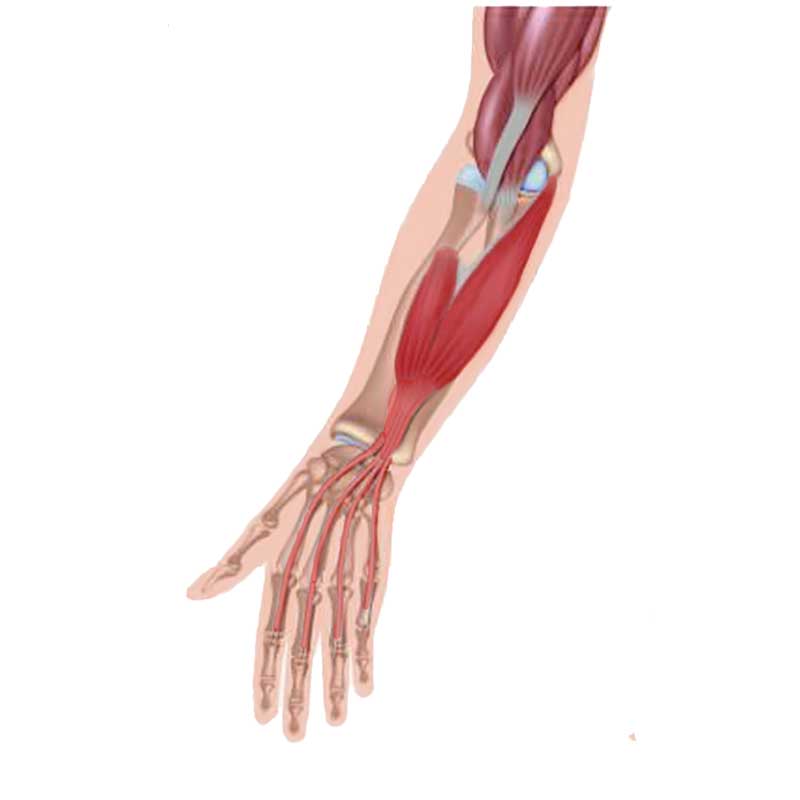
Flexor Digitorum Superficialis Anatomy Origin, Insertion, Action The Wellness Digest
Description: The Flexor digitorum superficialis is placed beneath the previous muscle; it is the largest of the muscles of the superficial group, and arises by three heads—humeral, ulnar, and radial. The humeral head arises from the medial epicondyle of the humerus by the common tendon, from the ulnar collateral ligament of the elbow-joint.

flexor digitorum superficialis origin and insertion Google Search Fisio Massage therapy
Function. Flexor digitorum profundus muscle is a powerful flexor of the fingers. As it pulls the distal phalanges towards the hand, it causes flexion of the digits 2-5 at the metacarpophalangeal and interphalangeal joints.The muscle can act on its own but it usually works in synergy with the flexor digitorum superficialis, lumbricals and flexor digiti minimi brevis muscles to perform this action.
:background_color(FFFFFF):format(jpeg)/images/article/de/musculus-flexor-digitorum-superficialis/4JSVZeEz4wYsEJIngKmg_EaQ0grdVpH2AVyUG5fw_M._flexor_digitorum_superficialis__3_.png)
Musculus flexor digitorum superficialis Anatomie Kenhub
It is the bulk of muscle located at the superficial volar/anterior aspect of the forearm. [1] The flexor digitorum superficialis courses along the volar aspect of the forearm, superficial to the flexor digitorum profundus and flexor pollicis longus muscles, and deep to the palmaris longus, flexor carpi radialis, flexor carpi ulnaris, and.
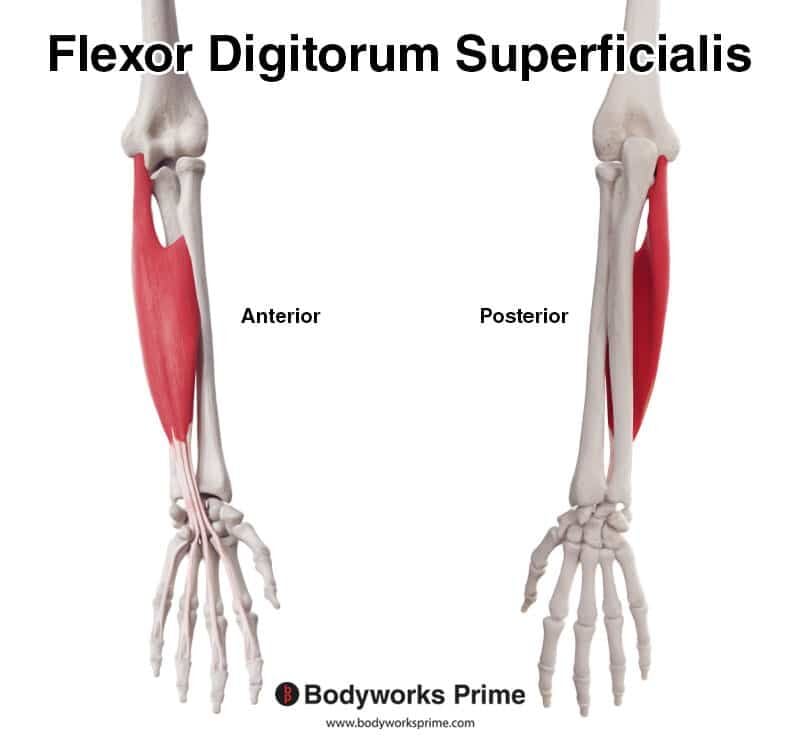
Flexor Digitorum Superficialis Muscle Anatomy Bodyworks Prime
The flexor digitorum superficialis and the flexor digitorium profundus tendons should be tested individually. A normal intact flexor digitorum superficialis is indicated when all the adjacent digits are held with all joints in extension while the patient flexes the finger at the proximal interphalangeal joint. On the other hand if the middle.

Menschlichen Flexor m.digitorum Superficialis Muskel Computer Artwork Stockfotografie Alamy
The Flexor Digitorum Superficialis is the only muscle in the Intermediate Layer of the Anterior Forearm Compartment. The Flexor Digitorum Superficialis has two heads: Humeroulnar and Radial. Medial epicondyle of the humerus via the common flexor belly/tendon to the anterior surfaces of fingers #2-5 (index, middle, ring, little).
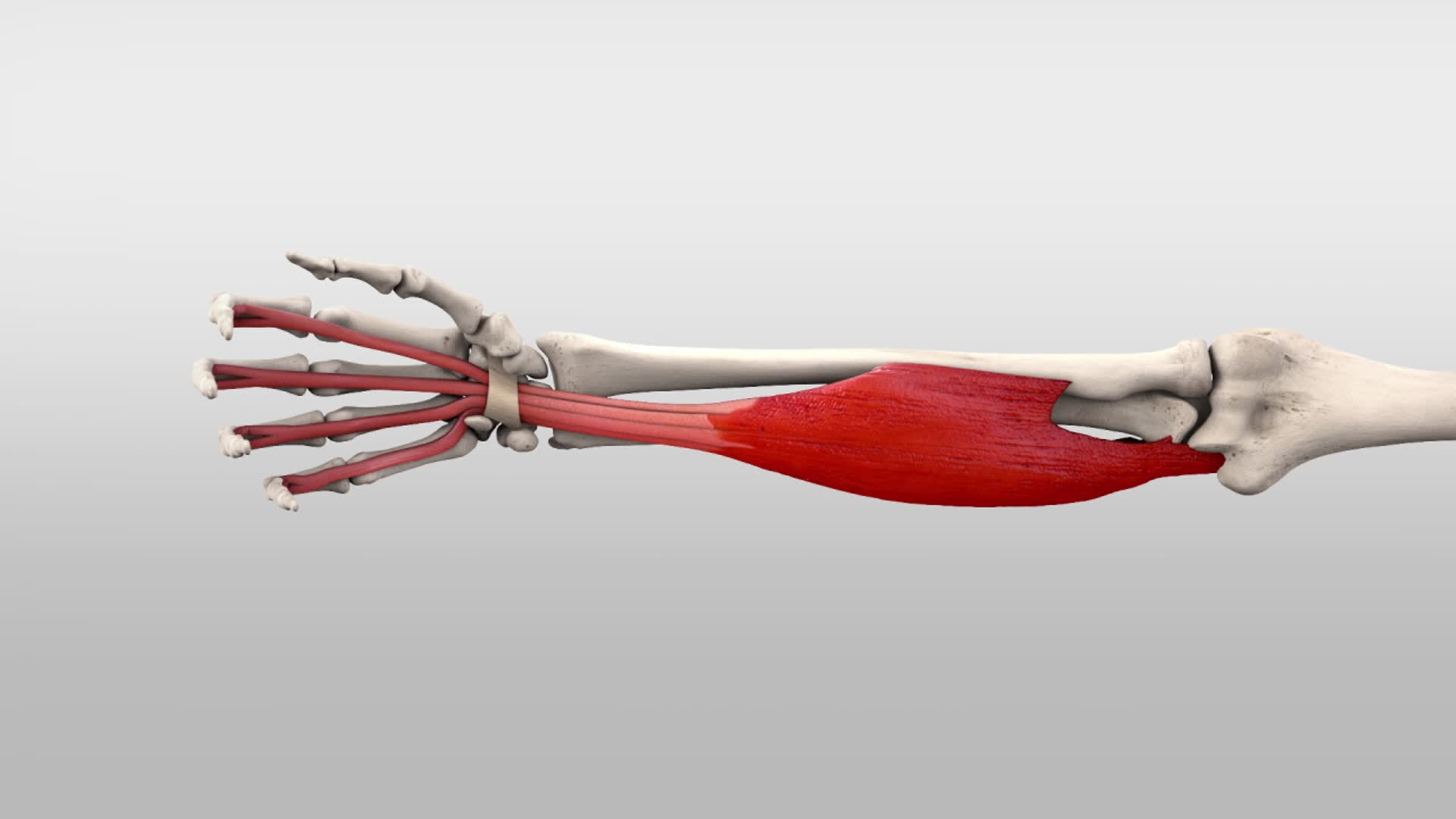
Musculus flexor digitorum superficialis DocCheck
Mori also found flexor digitorum superficialis joined with pronator teres 2.5% of subjects, flexor pollicis longus in 45%, and with flexor digitorum profundus in 8% of subjects (205 arms). Macalister reported the variations in flexor digitorum sublimis (superficialis) as follows: Absence of the tendon for the little finger by Wood and Macalister;

Flexor Digitorum Superficialis Rehab My Patient
Flexor digitorum superficialis (Musculus flexor digitorum superficialis) Flexor digitorum superficialis is the largest muscle of the anterior compartment of the forearm.It belongs to the superficial flexors of the forearm, together with pronator teres, flexor carpi radialis, flexor carpi ulnaris and palmaris longus.Some sources alternatively classify this muscle as an independent middle.
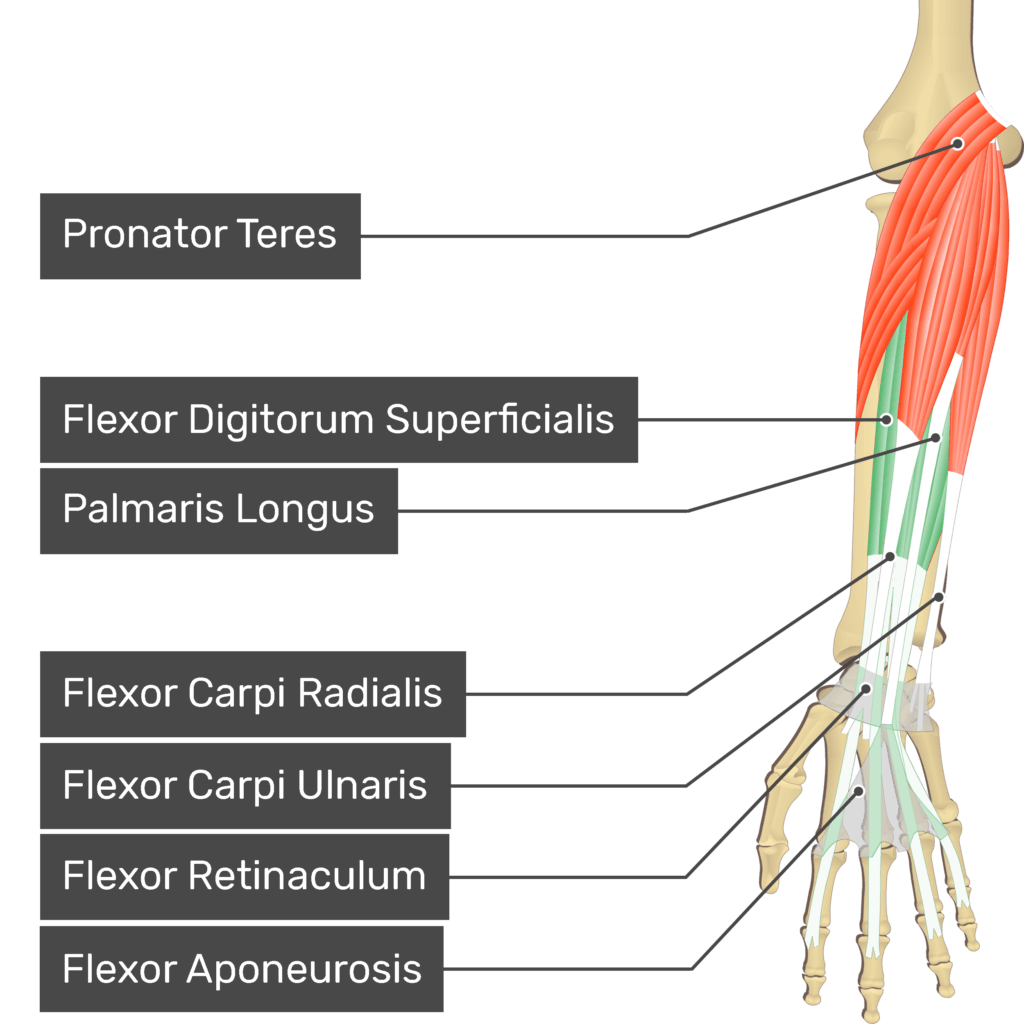
Flexor Digitorum Superficialis Muscle GetBodySmart
The muscle-tendon arrangement of the m. flexor digitorum superficialis (FDS) varies among different primate groups. Recent developmental investigations revealed that the primordium of FDS emerges in the hand region first and relocates to the forearm later. The relationship between the diverse muscle-tendon arrangement and the characteristic.

Flexor Digitorum Superficialis Muscle GetBodySmart
The flexor digitorum superficialis (FDS), formerly known as the flexor digitorum sublimis, is the largest of the extrinsic flexors of the forearm. It forms the intermediate muscle layer between the superficial and deep muscle groups of the forearm.[1] It contains four digital components, with a tendon that inserts onto each corresponding finger. The flexor digitorum superficialis is the.

FLEXOR DIGITORUM (SUPERFICIALIS) =deep to palmaris longus anterior of forearm ORIGIN medial
Summary. origin: flexor digitorum superficialis tendon near the transverse carpal ligament insertion: metacarpal head of the index finger near the A1 pulley Gross anatomy. The accessory flexor digitorum superficialis muscle of the index finger is characterized by several variations that have been reported in the literature.
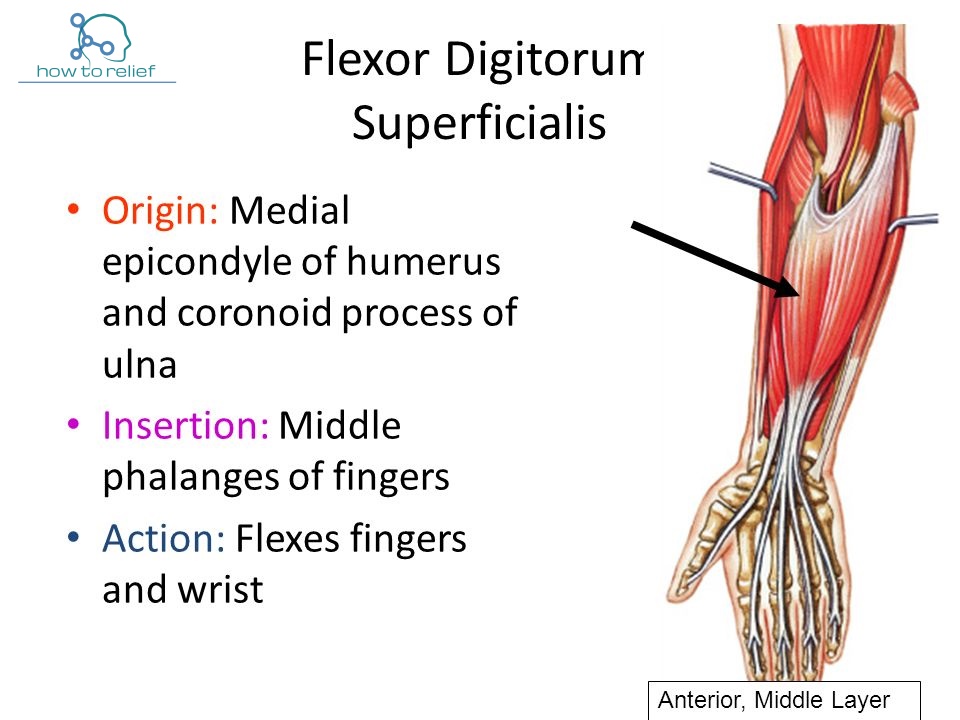
Flexor Digitorum Superficialis Origin, Insertion, Nerve Supply & Action » How To Relief
Flexor digitorum superficialis (FDS) muscle, also known as flexor digitorum sublimis muscle, is a muscle in the second (intermediate) layer of the anterior compartment of the forearm.It splits into four tendons, passes through the carpal tunnel under the flexor retinaculum.At the level of the head of the metacarpal, the flexor digitorum superficialis tendons split and wrap around the flexor.

Flexor Digitorum Superficialis Muscle StrainCausesTreatmentSignsSymptomsRisk Factors
Flexor Digitorum Superficialis. Origin: Humeroulnar head: medial epicondyle of humerus, ulnar collateral ligament, and coronoid process of ulna; Radial head: superior half of anterior border of radius. Insertion: Bodies of middle phalanges of digits 2 - 5.

Anatomy Stock Images forearmhandmusculusflexordigitorumsuperficialismusclemiddle
1. Introduction. The flexor digitorum superficialis (FDS) is the largest among the superficial flexor muscles situated in the anterior compartment of the forearm and plays a pivotal role in finger flexion, enabling essential hand movements for daily activities [].It is known for its complex structure with many anatomical variances (e.g., anomalous muscle bellies, anomalous tendon arrangement.
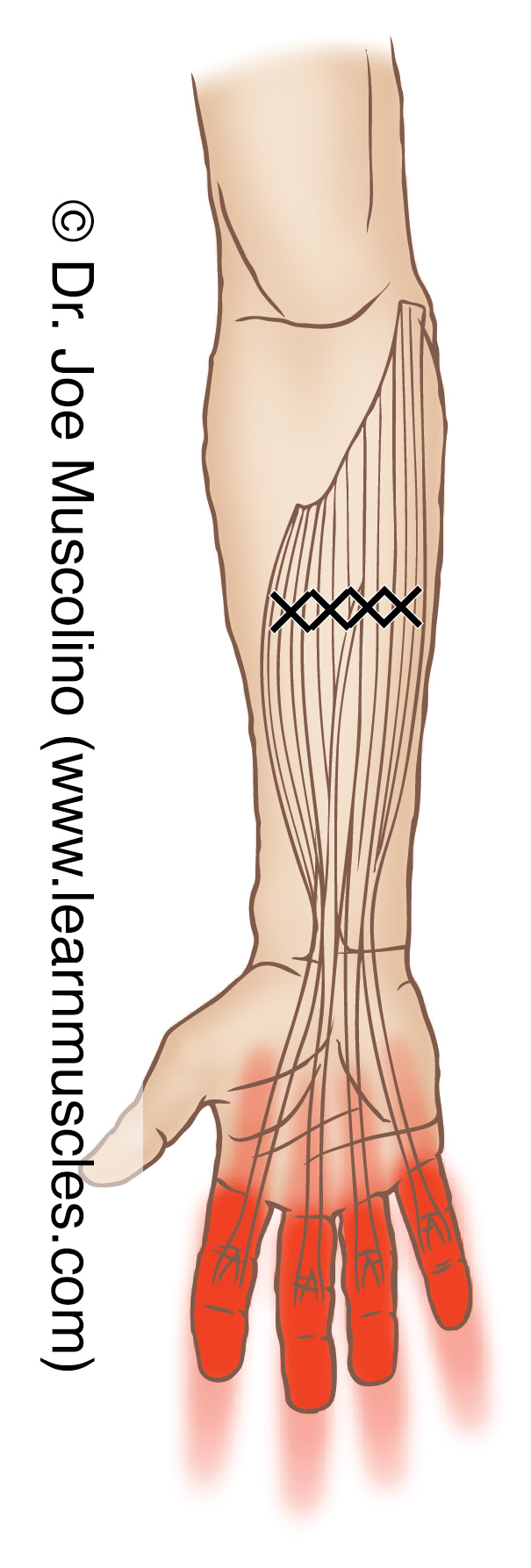
Flexors Digitorum Superficialis and Profundus Trigger Points Learn Muscles
The flexor digitorum superficialis muscle (FDS) is considered the most important of the forearm flexors for maintaining elbow valgus stability. However, the relationships between the origin structure of each finger of the FDS and the anterior oblique ligament (AOL) of the ulnar collateral ligament and the common tendon (CT) in the proximal.